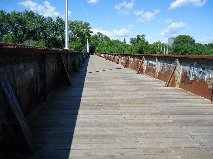Youth Take Charge: Research Explores After-School Programs in Eagle Place (Jayde Johns)
Grand River Community Health Center (GRCHC), in partnership with the Workforce Planning Board of Grand Erie, has a research project funded by The Ontario Trillium Foundation, which is dedicated to researching ways to improve educational outcomes and graduation rates in Eagle Place. The goal of this project is to create an after-school program that would raise high school graduation rates and increase enrollment into college, university and the trades for youth living in the neighborhood. This program would help future educational success rates by providing more opportunities and helpful resources to residents of Eagle Place.
This project is guided by a small group of teens, calling themselves EPAC, which stands for Eagle Place Action Crew who act as a Youth Advisory Group. I happen to be a part of this group. I have been there since the beginning and am still involved today. When I first joined it happened by just pure chance – an opportunity that I could not pass up. It started as a simple interview conducted in order to hear my thoughts about the community of Eagle Place and the opportunities it could hold. I was, in fact, the first one to join. Then there would be days that I would partner up with Jen Vasic to walk around Eagle Place and inform people of our project. As time progressed, it turned into a growing group with other youth from Eagle Place giving their input and thoughts. One thing that has made this group successful has been the sense of home. I never felt in danger there. We all come from the same area and challenges. I no longer live in Eagle Place, but that feeling of belonging with the neighbourhood has not changed.
The youth in EPAC have thoughts, knowledge and full understanding of the challenges in Eagle Place, including low income, costly house maintenance that is needed more often on the many older homes in the neighbourhood, drugs, and even something as simple as lack of motivation. These challenges may also serve as a reason as to why some youth don’t see the point of getting their Grade 12 diploma. In addition to acting as an advisory group, what else is EPAC doing in our community?
•The group is currently working with a local graphic designer to create a logo.
•We are organizing an event during Lifelong Learning Week on September 21, 2013 from 1-4 p.m. in the Eagle Place neighbourhood with food and activities. More details will be announced in early September.
•We will be organizing an event at the end of the project. The purpose of this event will be to share findings from this project and future plans for an after-school program.
In addition to EPAC providing insights, the Community Based Researcher, Jen Vasic, who is coordinating this project, is engaging and consulting with many other youth, ages varying from 12 to as old as 21. Jen is also currently speaking to several parents/guardians who live in the neighbourhood. Both youth and parents/guardians have important insights. More help means more minds, more knowledge, and more solutions.
Stereotypes exist everywhere, from what clothing brands people wear, to what they are interested in, to categorizing communities. Half the talk saying Eagle Place is a bad part of town is mostly just talk. This reputation becomes part of the neighbourhood identity and regularly enters small talk.
However, residents of Eagle Place seem to stay together and are a tight knit community. This sentiment is supported by other people from Eagle Place as well. In initial conversations with neighborhood residents Jen says, “I am hearing people say they strongly feel connected to their neighborhood and the people in it. They care about their neighbors and feel like their neighbors care about them. This environment, one in which people are invested in other peoples’ safety and well-being, makes Eagle Place an excellent location for an after school program that would help more children and youth succeed at school”.
If there was a program that would help even a handful of kids to study, to have a safe place to go to, or even to find people to help with day to day skills, it will be useful. A program like this will brighten the future for children, serve many youth in the community, and change people’s lives.
If you would like to become involved as a volunteer, or if you have any questions or comments please contact Jen Vasic, GRCHC’s Community-Based Researcher at (519) 754-0777 ext. 298 or jvasic@grchc.ca
